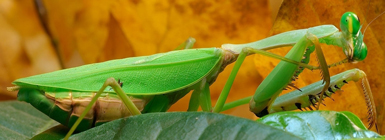
Altruism and Selfishness in Animals

The Praying Mantis is a predator, carnivorous and cannibalistic insect. Very often, the female eats the male head during or after mating, probably, as a reproductive strategy to enhance fertilization while obtaining food.
Honey bees use the sting against enemies when they perceive the hive to be threatened. When this happens, the honey bee dies because the entire stinging apparatus is pulled from the bee’s abdomen. This is an example of altruistic behavior in social colonies.


Vervet monkeys (mainly females) generally have an altruistic behavior when they see a predator. They emit a warning call to alert the rest of the group of an imminent danger. In doing so, they attract all the attention to themselves risking their lives and chances of survival.
Adélie penguins have shown selfish actions in their natural habitat. Sometimes, one of the individuals is pushed off into the cold waters of Antarctic while the others observe if the chosen one is safe or not. If there is no danger, the other penguins jump off the cliff into the water.


